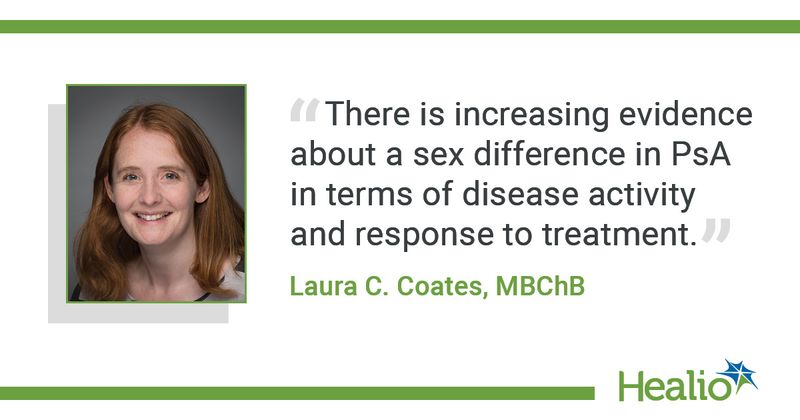Women with psoriatic arthritis report worse outcomes, treatment response vs. men
There are key sex-specific differences in how psoriatic arthritis manifests in patients, with women reporting worse outcomes and treatment response compared with men, according to a review published in The Journal of Rheumatology.
“There is increasing evidence about a sex difference in PsA in terms of disease activity and response to treatment,” Laura C. Coates, MBChB, associate professor in the Nuffield Department of Orthopedics, Rheumatology and Musculoskeletal Sciences at the University of Oxford, in the United Kingdom, told Healio. “I think it’s great that this is starting to be recognized and we wanted to summarize that data.”

Specifically, identifying and examining sex-specific differences in PsA could lead to more personalized care and improve clinical decision making, Coates and colleagues wrote.
To investigate potential sex-specific differences in clinical manifestations, disease activity and patient-reported outcomes among those with PsA, the researchers conducted a systematic literature review. Coates and colleagues searched MEDLINE, Embase and the Cochrane Database of Systematic Reviews for literature published between Jan. 1, 2015, and Nov. 13, 2020. Records of interest included any observational studies investigating patients with PsA that reported results separately by sex.
Studies with fewer than 100 participants were excluded, as were interventional studies. In addition to the databases, the researchers hand searched through the works cited in all identified records.
After the pertinent data were extracted from the literature, a second researcher verified the information to make sure nothing was missed. Extracted data included patient characteristics, demographics and disease outcomes, as well as study design details. A separate researcher identified the quality of each included paper.
The analysis included a total of 27 unique studies. In general, the researchers found that women demonstrate higher rates of peripheral disease, resulting in higher counts of tender joints, according to the researchers. Meanwhile, men appeared to have a higher burden of axial disease and greater levels of skin involvement. There were no sex-specific differences in Dermatology Life Quality Index scores. In general, women reported worse patient-reported outcomes and had worse responses to treatment than men, the researchers wrote.
“The results of this [systematic literature review] support the existence of sex-specific differences in PsA,” Coates and colleagues wrote. “Further research in the form of large-scale observational studies, qualitative patient interviews, and analyses of particular outcomes adjusted for comorbidities or clinical characteristics would be valuable to confirm and further elaborate on these findings, as well as investigation of the mechanisms for these differences.”
